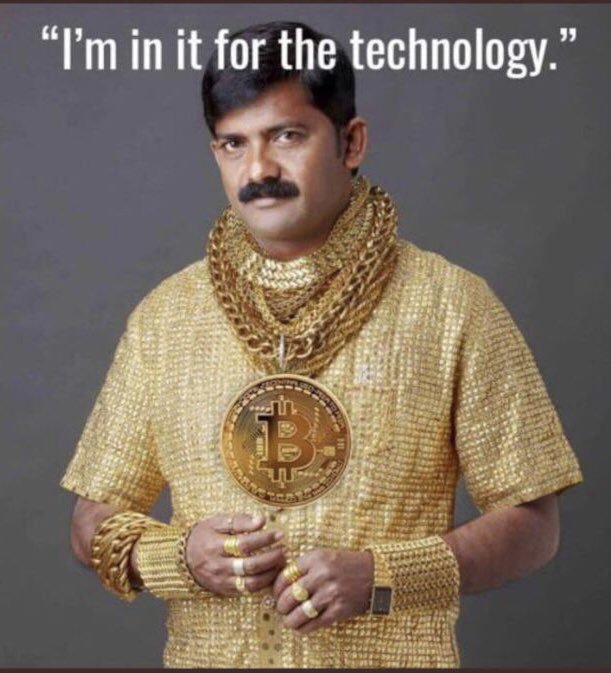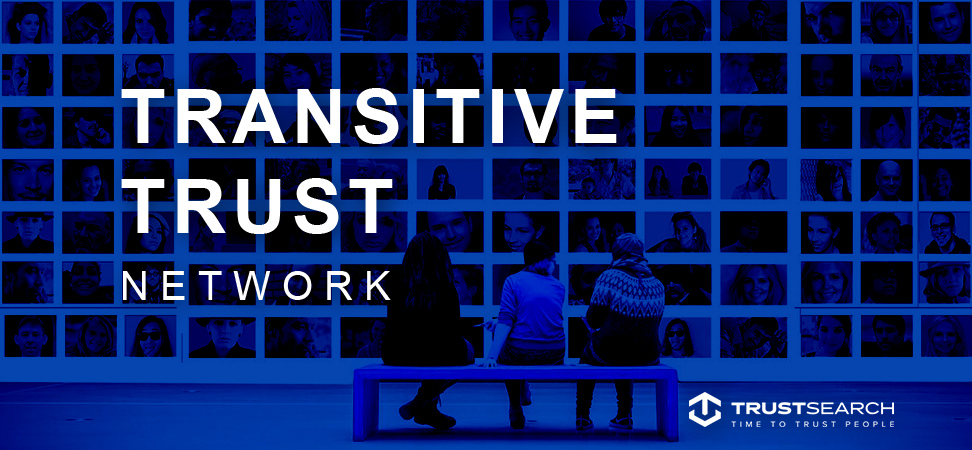
From Utility to Security – Shift in progress ?
On amygdalas, satire, and the future of alternative funding
The words “utility token” and “security token” should ring a bell to everyone in the Blockchain community. Beyond completely misunderstood, they are polarizing in a nearly religious fashion. For this reason, we figured that we ought to drill deep into the details of the subject and give our readers a full-scale comprehensive study. Let’s dive in, but how about some psychology to begin with?
Psychology 101 – On Reward Sensitivity and ICOs
There is a common consensus that psychopaths are individuals with damaged amygdales. There is also a problem with common consensus or – to use the psychology term – collective psych. They blur the boundaries between the factual and the mythical. So, are we dealing with a fact or a myth? Because for a long time, I believed that Napoleon was ugly short – which motivated his domineering behavior. I also presumed that the Great Wall of China is visible from space. Well, the first is a derogatory social stereotype. The second is a space myth.
But the amygdala damage in psychopaths has been scientifically proven to be true. Here is where things get tricky: the amygdala processes an interesting emotion instantly triggered while investing: it’s called “reward sensitivity”. And it comes from a dark, animalistic, primate place within.
It’s the thrill we get from taking irrational financial risks to seek gain. While a healthy amount of such sensitivity fuels success, being a thrill junkie has a dreadful price tag on it.
In 2000, a very high profile company merger ended up wiping out $200 billion of shareholder value: it’s the AOL-Time Warner deal now taught in business schools to teach investors the importance of backing off.
“I did it with as much or more excitement and enthusiasm as I did when I first made love”
exclaimed Ted Turner, a top executive in charge with the merger. Only one year down the road, AOL Time Warner reported a loss of $99 billion — the first time a company reports such huge losses. So much for first timers.
Comparing such an irrational deal with lovemaking says a lot: It’s the oeuvre of an eager amygdala. It’s not that executives are irrational people driven by instinct . They’re actually smart and usually end up doing great in life (Ted Turner went on to become a billionaire, while countless AOL-Time Warner investors went bankrupt).
Even more damning is, we are still seeing this behavioral pattern whenever some reward hangs like a ripe fruit on a tree. Otherwise, there is no way to explain the frenzy of Initial Coin Offerings (ICO). To get to the bottom of this subject, there is nothing better than a little humor.
Useless Tokens – A Serious Joke
Let’s face it: most ICOs sell useless tokens to people seeking easy profit. Now that we established that profit seeking is part of being human, there’s no shame in it. But it would be great to save everyone the “I’m in it for the technology” part. Seriously.

Stranger than reality, “Poe’s law” manifested itself in a satiric ICO project called the “Useless Ethereum Token” (UET). Taking advantage of absent regulations, here is what the project announced to its potential investors:
“You’re literally giving your money to someone on the Internet and getting completely useless tokens in return. There are no “whitepapers,” no “products,” and no “experts.” […] Seriously, don’t buy this. Why are you even still reading these?”
The UET ICO ended up raising 310 ETH according to its website. It was then equivalent of $200’000. With nothing but a joke and a two-page website, someone just pocketed hundreds of thousands of dollars with no good reason. I actually have a feeling that I might need time and meditation after recalling this to regain faith in humanity!
Knowing that satire provides the keenest insights into a group’s collective psyche and values, this is a lot more than a joke.
In a way, every ICO investor has an irrational anarchist laying low. It’s that part, genuinely hostile towards banks specifically and authorities broadly. It’s a character that thrives under the banner of decentralization, mumbling a sweet “Bella Ciao” revolutionary anthem. And it’s mostly driven by the instinctive amygdala.
Based on this, let’s take a closer look at the most important cycles in the ICOs lifetime. I would call them the “Utility phase”, the “Discount phase”, and the “Security phase”.
Phase I – The “Utility Phase”
Here is what characterizes this era: numerous projects raised billions of dollars – typically in minutes or hours, sometimes more. For instance, Aragon raised $25 million in half an hour in May 2017. Tezos raised an astonishing $230 million in June 2017. The list goes on.
It’s also curious that all tokens offered for sale were “utility tokens”. There was no venture capital (VC) involvement and no major discount on token prices. But, what does “utility” even mean? Let’s imagine for a second Amazon’s founder and CEO Jeff Bezos’s notorious pitch to his early investors:
“I think there’s a 70 percent chance you’re going to lose all your money, so don’t invest unless you can afford to lose it.”
Of course, Amazon’s early investors didn’t lose a dime. They actually made huge profit and mostly went on to become billionaires. Today, Amazon is a top tier 500 Fortune Company valued at some $900 billion. But if Bezos would have offered is investors “utility tokens” during funding rounds, they would have made billions of Amazon gift cards or souvenirs with no value other than speculation, uncertainty, and mere promises. It doesn’t take a seasoned investor to understand that this is nonsense.
The absence of regulation during this phase consumed it with fraud and scams spreading like wildfire. ICO speculators became the majority of participants. Soon enough, they stopped showing up with declining ROIs. Project leads were none the wiser, eventually failing to deliver any of the promises on their “Whitepapers” and their “Roadmaps”. It was an ugly time of truth for the dreamers: the crypto-community is no better than the sharks of the cold, authoritarian, corporate world. And ICO is all about “fast bucks”.
Consequently, ICOs earned a bad reputation. One of greed and dishonesty. A stain that usually sticks and lingers. For time-framing considerations, this phase came to an end around Q4 of 2017.
Phase II – The “Discount Phase”
It was a “win-win” deal that brought VC and traditional accredited investors to the ICO party. On one hand, there was an obvious potential for liquidation and huge short-term ROI. On the other, a need to use the “mask” of traditional finances to gain credibility. You’d typically see people with amazing achievement and proven track records serving as projects advisors, but seldom as team members. As a matter of fact, the vast majority aren’t true advisors. They are no more than marketing pawns to gain credibility and wash the lingering ICO stain.
During this phase, VC and accredited investors got massive discounts during pre-sale event. (Hence the “Discount Phase”). They were the ones making the “fast bucks”, selling their tokens the minute they hit the exchanges. This led to a repetitive scenario where all token values drastically dropped as soon as regular investors got the chance to trade them on the crypto stock market. With their portfolios plummeting day in day out, most ICOs hype fades away within a week of ICO completion. Communication channels like Slack and Telegram, once vibrant with hope, turn to a place of lamentation over lost funds. A gloomy end indeed.
This phase also saw the Security & Exchange Commission (SEC) hammering some projects, and making official statements on ICOs.
“The vast majority [of ICOs] are securities”
explains SEC’s chairman Clayton to CNBC on June 2018. Certainly a great leap towards wide exposure but this phase is no more than another disillusion. For time-framing considerations, we are currently witnessing the end of this era.
Phase III – The “Securities” Phase
It was about time. A growing part of the crypto-community came to the conclusion that “legit” ICOs don’t need to elude regulatory radars. It’s rock bottom: a great project with plain intent should protect investors and leverages existing regulatory frameworks to get access to a permissible capital. This gave birth to “security tokens”.
Compared to ICOs, a Security Token Offering (STO) is backed by tangible assets (i.e, company shares, company profit, company assets) and confers real investor status and privileges (equity holding, right to vote on strategic decision and hold committee seats). Simply put, they are “tokenized” shares of stocks. This means a converted equity security right / debt instrument to a “token”: a digital representation native to the Blockchain. Such conversion comes with a great advantage for investors: it’s an ultimate way to protect their portfolios in an inalterable database while conferring them a borderless distribution.
This immerging ecosystem embraces SEC oversight hence mitigating scam risks. The investors are actively engaged in the project they are bidding on and direct their worries to its financial success as is the case with IPOs.
We are still at the dusk of this new era. So far, some STO specialized exchanges bubbled to surface.
Currently, if a startup desires to offer an equity token (or any security token), they have to figure out how to do so within the existing legal framework in their jurisdiction – a complicated task to say the least. Furthermore, the existing crypto exchanges today will not list security tokens thus causing total lack of liquidity.
But Polymath and Harbor are bringing about an answer to this matter. They crafted fully functional marketplaces where token issuers and token investors get to connect. This provides a framework for investors and autonomously assist issuers to perform legally compliant securities in line with regulatory jurisdictions worldwide. Furthermore, it allows legal delegates to bid and assist with the legal process, developers to bid in order to create or analyze smart contracts, and KVCs to offer validation and accreditation services back to investors.
To this matter, an STO is establishing itself as the up-and-coming way to raise funds. It allows any company (whether Blockchain oriented or not) to issue equity tokens on a Blockchain (public or private).
What’s Next?
Challenges are not shortcoming for the burgeoning STO market. It’s still early to think of STOs as overly inclusive and most countries still restrict them to accredited investors. Other challenges swing around mainstream adoption, the quality of upcoming projects, Blockchain friendly frameworks that bridge tokenized economy to traditional finances and the lost faith in cryptocurrencies that was lost in pounds and has to be earned back in grains.
Speculations aside, will STOs take center stage in 2019? The timeline seems to stand. But it takes more than that to wash the ICO stain. Let’s wait and act accordingly.
For live updates and close community engagement, please join TrustUnion’s social channels:


